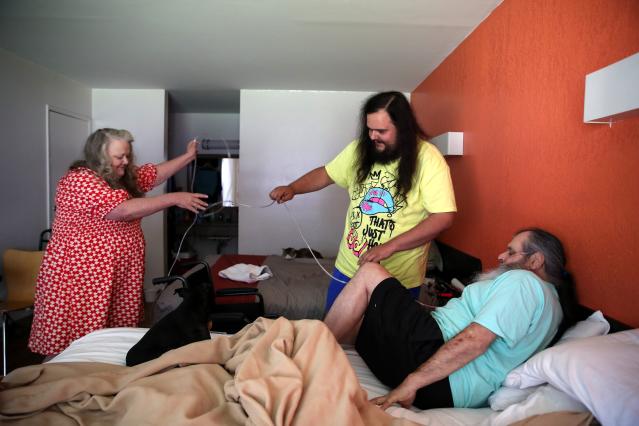
More male caregivers are taking on the role of tending to a loved one – a role that may have traditionally fallen more on women’s plates, a new study reports.
The role also comes with its challenges, especially when it comes to balancing family caregiving with a career and other family responsibilities.
One in four male caregivers out of a survey of 1,000 American men said they have hidden their caregiving responsibilities from their employer, according to a new study by Carewell, an e-commerce platform offering family caregivers products and educational resources.
One in three men regularly perform unpaid caregiver work, spending an average of 21.5 hours on caregiving tasks each week, according to the survey results, which were provided in an exclusive first look to USA TODAY.
Why are more caregivers male?
Carewell performed the study to “explore the evolving role of male caregivers in caregiving, a domain traditionally seen as predominantly female,” said CEO Bianca Padilla. “By highlighting the growing number of men stepping into these roles, we hoped to not only shed light on their unique challenges but also celebrate their dedication and contributions.”
The study’s results show that caregiving is “becoming more inclusive, with looser bonds to traditional gender roles,” said Padilla, who created the e-commerce site with her husband, Jonathan, after having difficulty finding and knowing what products were needed or used when she helped her mother care for her grandmother. The company, which supports 53 million family caregivers in the U.S., said it also serves as an advocate for that group.
Caregiving and societal pressures have changed
While caregiving has always existed, the pressures on today’s sandwich generation are heightened by several factors, Padilla said.
Economic challenges like rising healthcare and living costs add financial strain, she said. “Additionally, the prevalence of dual-income households and demanding work schedules leave less time for caregiving. Advances in medicine have also extended life expectancy, leading to longer caregiving periods, making it more feasible and desirable for seniors to age in place,” Padilla said.
In a survey Carewell conducted in 2024, “Overcoming the Sandwich Generation’s Caregiving Challenges,” 71% of middle-aged Americans said they were caregivers for both their children and parents and 41% are the sole caregivers. Seventy percent balanced full-time jobs with caregiving duties, spending an average of 37 hours per week giving care, the 2024 survey found. The average amount spent on giving care each month was $2,054.
In the most recent study, 3 out of 4 male caregivers also work a full-time job, and 10% work a part-time job. Only 7% of male caregivers have no other job besides providing care to a loved one.
“We’ve also noticed that employed caregivers, regardless of gender, are struggling to balance work and caregiving, leading to a growing demand for workplace flexibility and resources,” said Padilla. “Overall, it reflects a broader trend toward acknowledging caregiving as a universal issue that affects everyone, regardless of age or income.”







